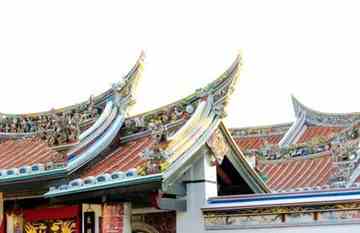Singapore and Malacca are like chalk and cheese, but both will contribute to a small, unique exhibition that will open at Musee du Quai Branly (MQB) in Paris this month.
 The show will reflect the differences of the two, one vibrant and eager to embrace the latest trends, the other, a small, somewhat sleepy town living a lot on its past.
The show will reflect the differences of the two, one vibrant and eager to embrace the latest trends, the other, a small, somewhat sleepy town living a lot on its past.
A seaport in the Straits of Malacca, in the 15th century Malacca had been occupied by the Portuguese and Dutch. Chinese admiral Zheng He's huge ships came to town and with many of the crew marrying local Malay women, a new race of people were born, the Peranakans.
The term means "local born" in Malay but essentially is a mix of Malay and Chinese, with some Indian and European influences.
Traditional Peranakan clothing features intricate Chinese embroidered blouses in bright tropical colors, paired with batik sarongs. Food is spicy, marinated and cooked, often necessitating a full day's toil in the kitchen. Peranakan men are called babas and the women, nonyas and they are the matriarchs of their households.
The Peranakans have long been known as resourceful and adaptable. Initially spreading to northern Malaysia, with Penang a Peranakan stronghold, as well as Singapore and Indonesia, they learnt English and became successful in politics and business.
While Malacca is the cradle of Peranakan culture, Singapore has worked aggressively to preserve and promote it. One of the biggest achievements is the establishment of the exquisite Peranakan Museum in a restored colonial building, a treasure house of Peranakan furniture, kitchenware, traditional clothing, jewelry and crafts.
A local Peranakan TV series The Little Nyonya was a hit and iconic plays such as Emily of Emerald Hill have been performed from Singapore to Edinburgh.
Local cultural arts and theater group The Main Wayang Company has produced over 70 Peranakan-themed performances and will stage a traditional wedding procession and dance at MQB in Paris.
"Many young Singaporeans are coming forward to 'claim' their Peranakan heritage and their roots," said Richard Tan, one of Wayang's founders.
Peranakan culture is growing as a viable art form with Tan viewing the promotion of Peranakan culture as the promotion of cross-culturalism and multi-racialism.
"Like our Peranakan forefathers, this is the modern wave of sinkeks [Chinese Fujian for new visitors] from foreign shores settling on our Singaporean soil and yes, if the tourism board can find use through baba culture, why not?"
In 2008, UNESCO World Heritage status was awarded to Malacca and Penang, which means that the twin cities will be more carefully preserved and promoted.
The old town of Malacca is beautiful to visit, with its Red Square and red-painted Stadthuys, the oldest Dutch building in Malacca as well as the Old Dutch Church.
Chinatown boasts temples and clan association houses with intricate roofs and entrances, as well as the Zheng He Museum, a somewhat cluttered but highly interesting collection with great models of Zheng He's ships.
Rumah Baba, (rumah meaning house) the home of a former successful anglophile who filled his home with Chinese antiques, English tea services and knick-knacks. Visitors take off their shoes to enter the upstairs living quarters and descend to be served tea in an open courtyard kitchen. Most old Peranakan houses have no roofs in some parts, allowing fresh air and sunlight to circulate freely. There are many old-style two-story Perakanan houses with elaborate facades still standing in Malacca, used for residential abodes, businesses and shops.
While its culture is being celebrated on the other side of the globe, Malacca is a great place to visit and perfect for those seeking an escape from the more bustling cities of Asia.
Author: Ming E. Wong | Source: Global Times [October 10. 2010]